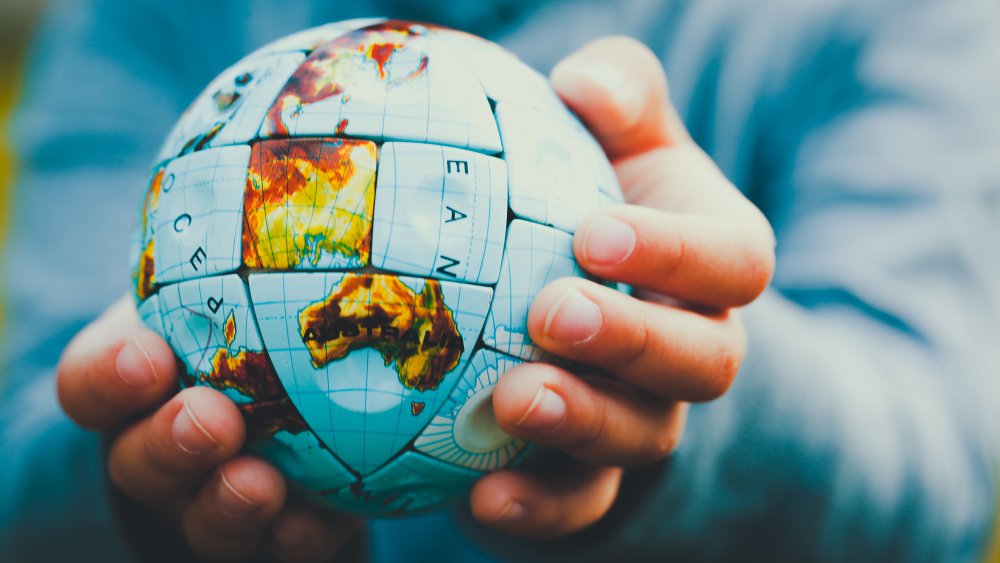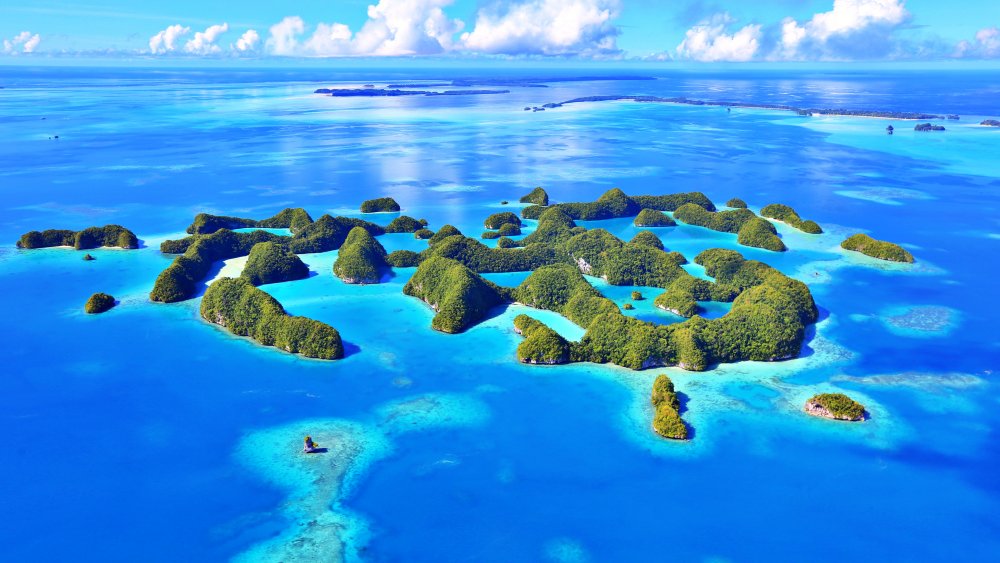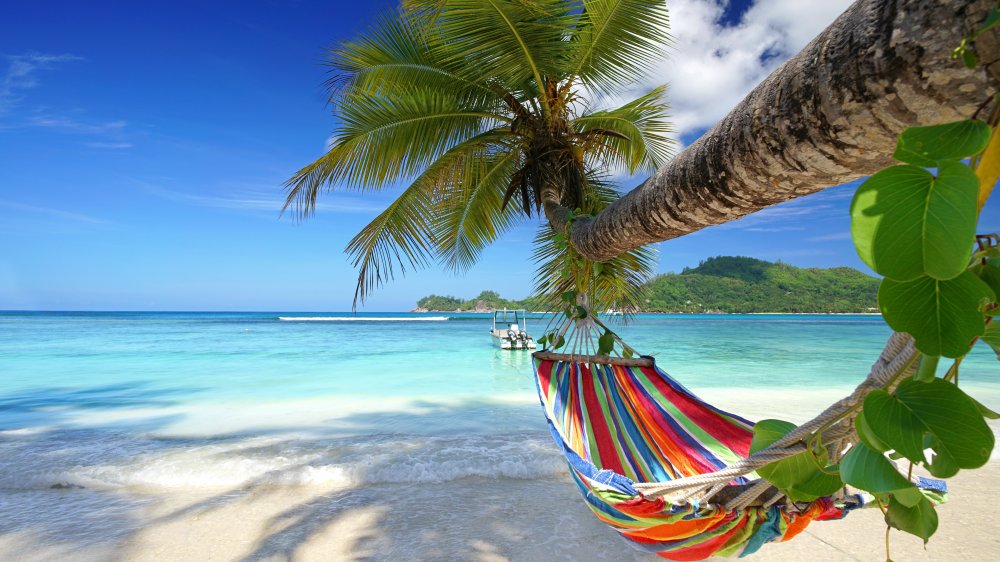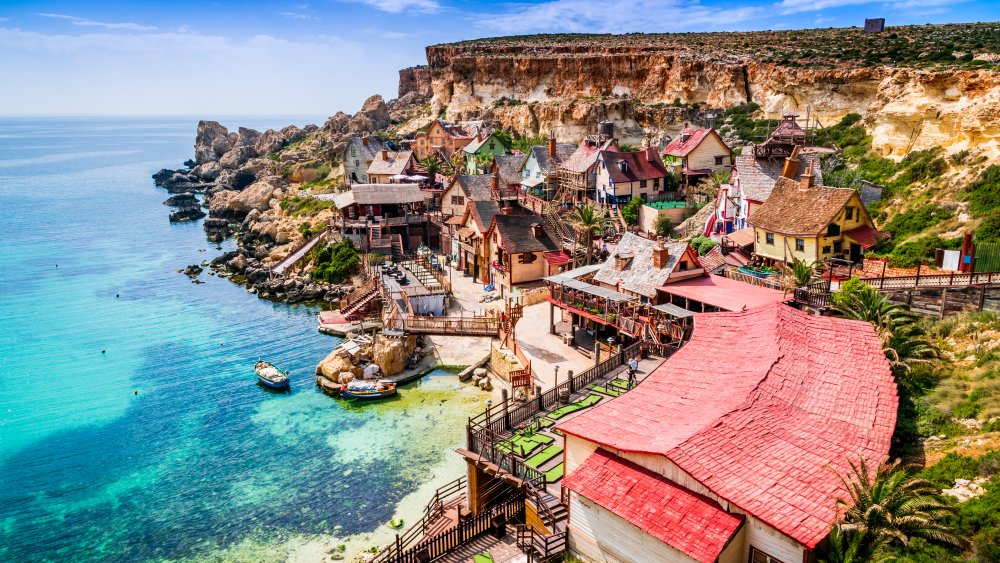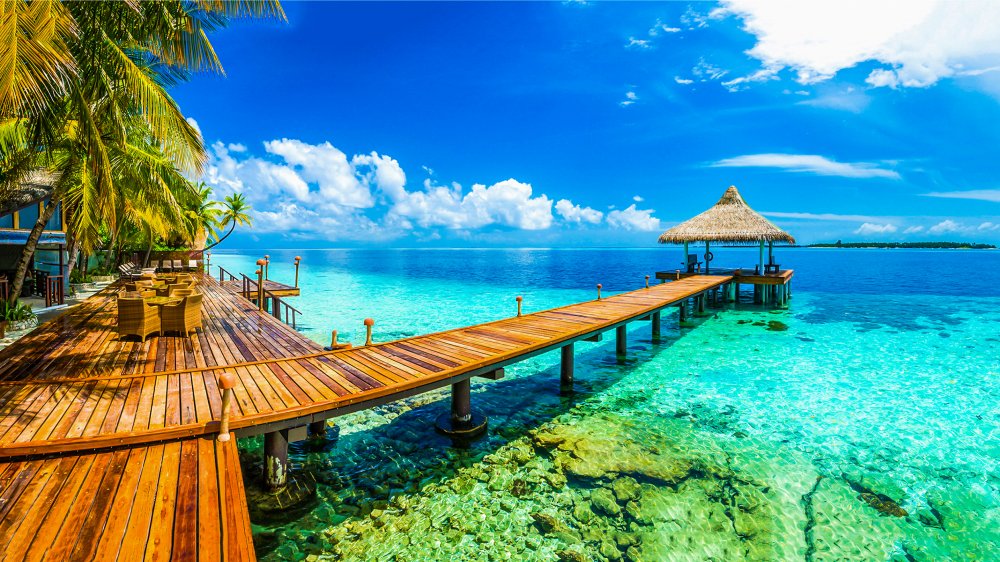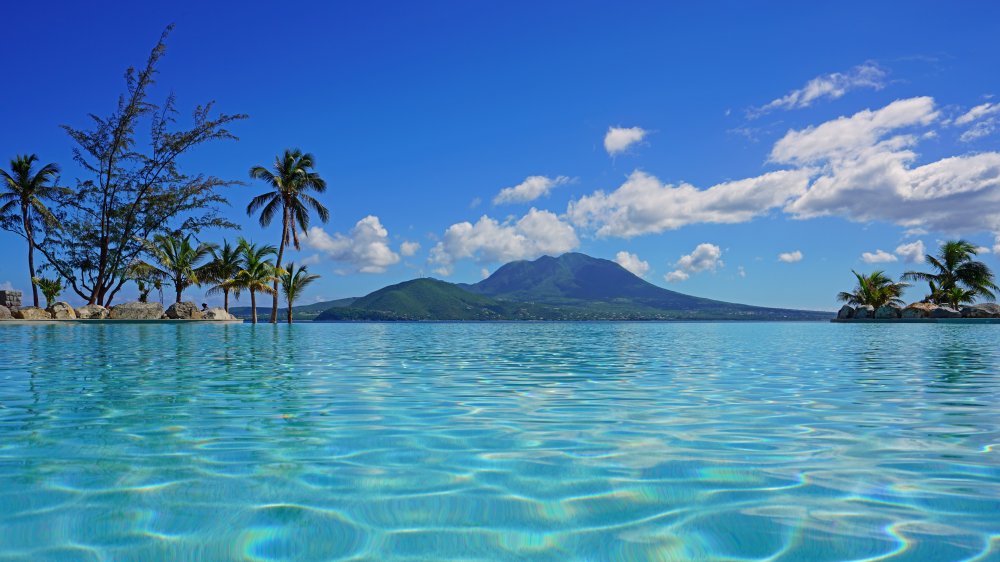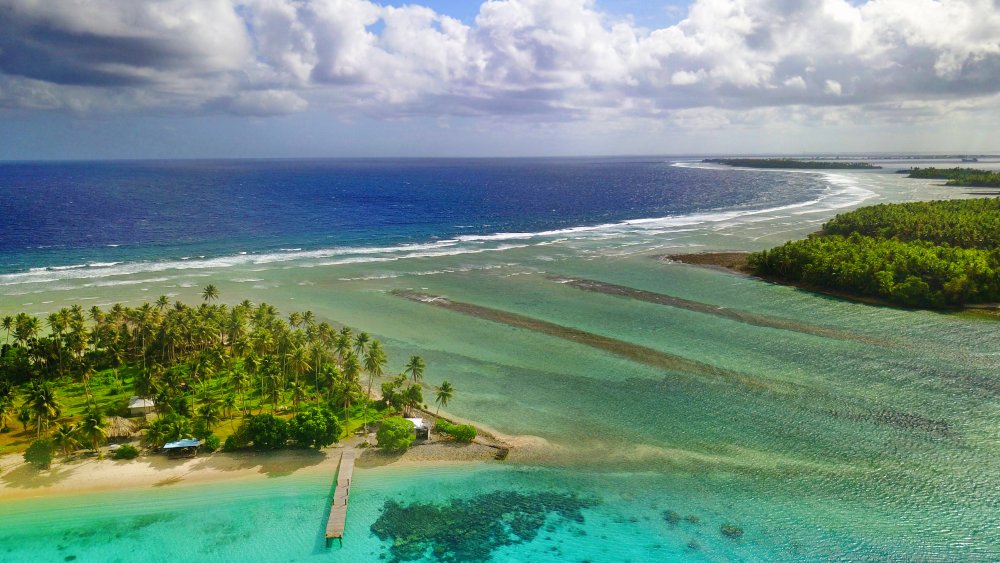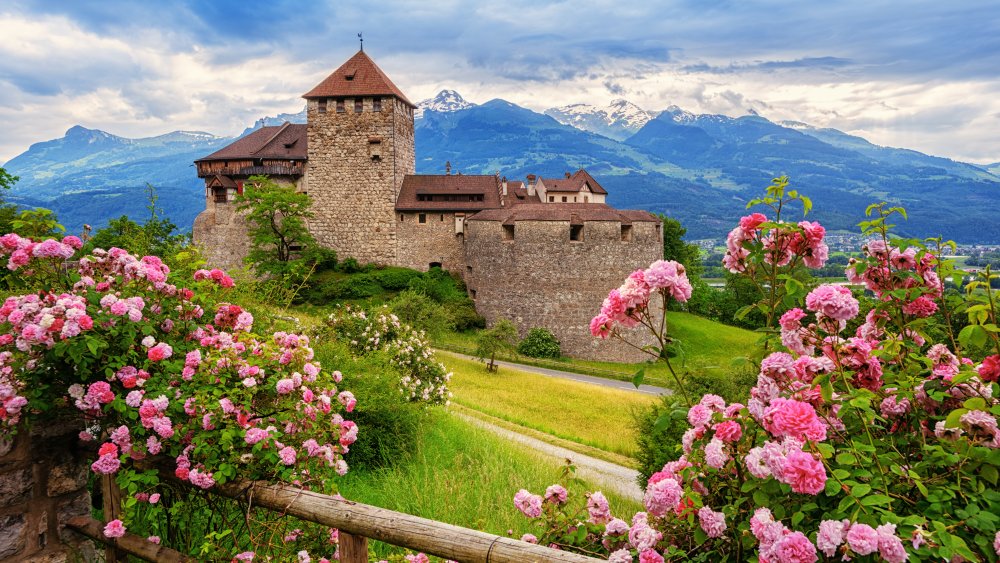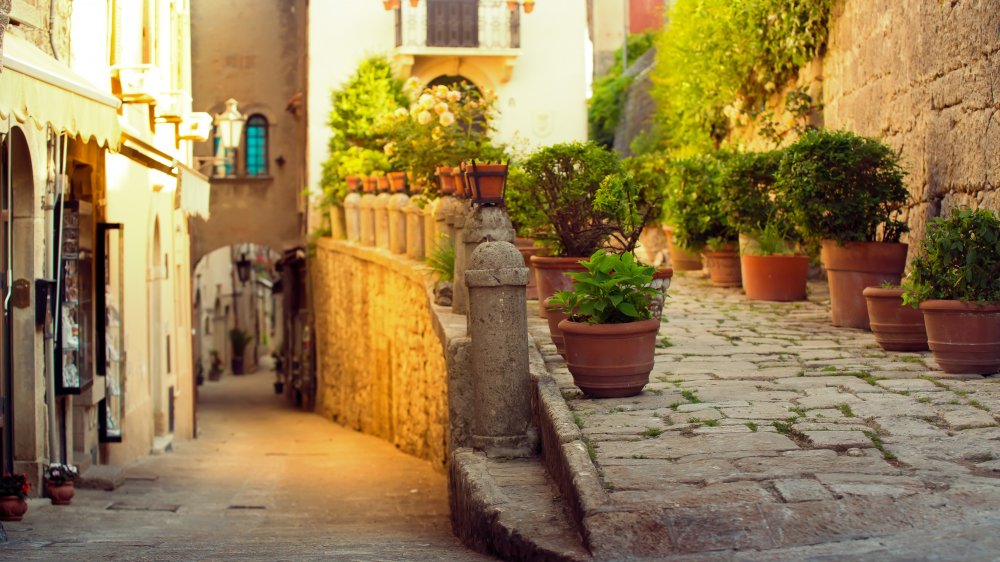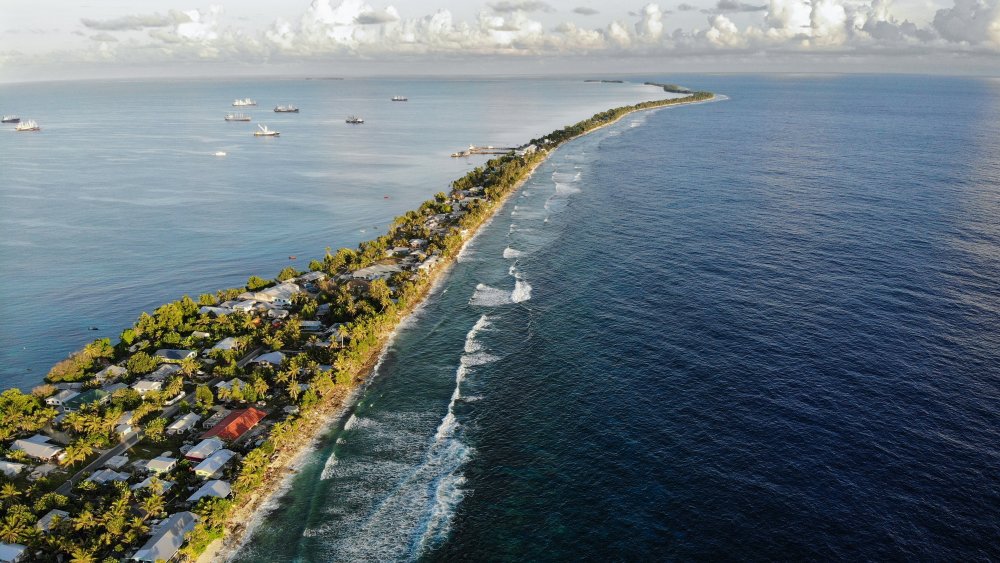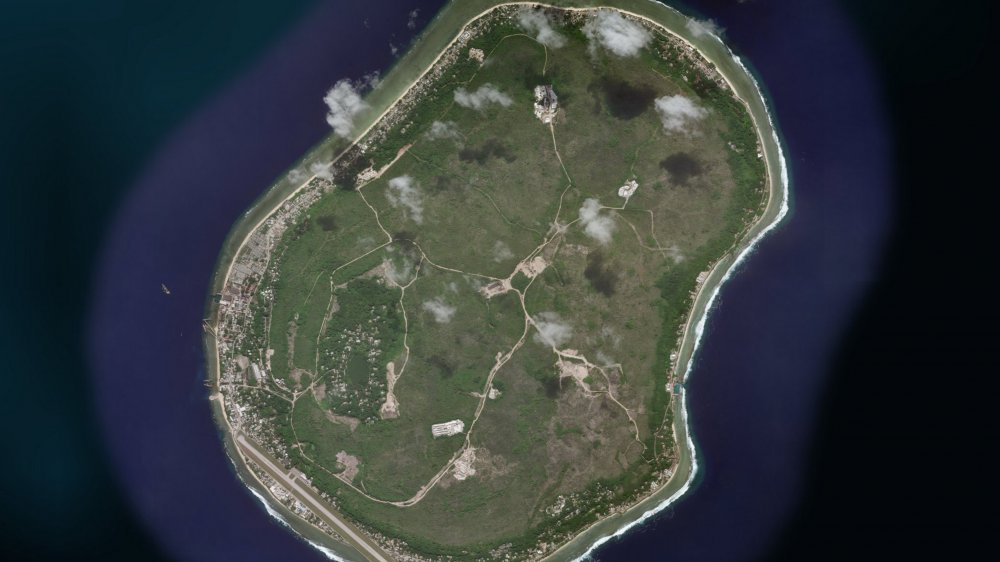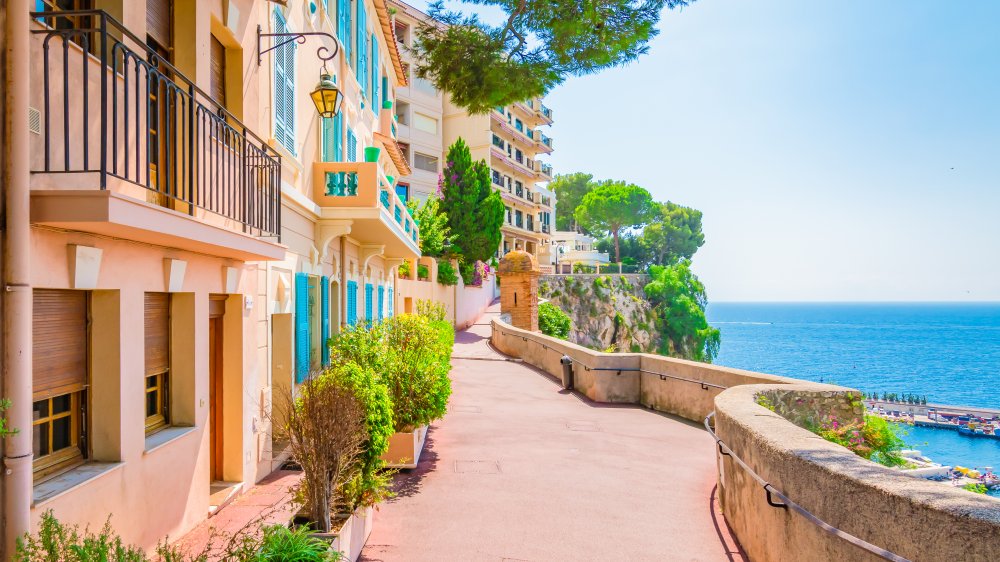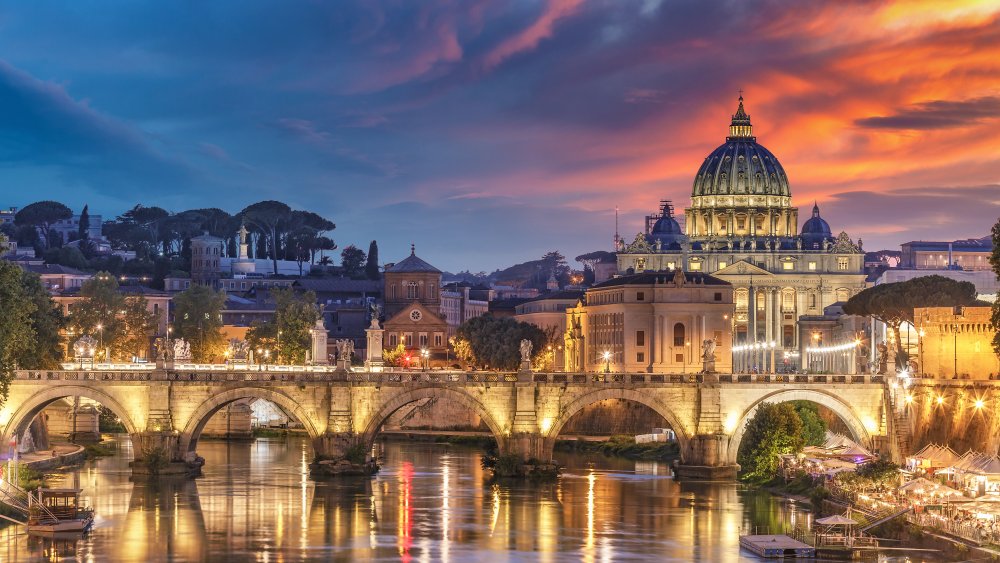The Tiniest Countries In The World
It's no secret that the United States is big. Like, really big. According to Statista, it's the third largest country in the world, covering a whopping 9,833,517 square kilometers. There's only two countries that are larger: it's just barely below Canada in terms of area, and Russia sits on top with more than 17 million square kilometers of space. When it gets to numbers that big, they don't really mean much, do they? We'll just say that it takes days to drive from the East Coast to the West, and even flying? That's a pretty long haul, too.
At the other end of the spectrum are the tiniest countries in the world, and these are so small that even America's smallest states look positively giant in comparison. Some are so small you don't even need to drive or fly across — you can walk across them in just a few hours. That doesn't mean they're insignificant, though, as the old saying that you can't judge a book by its cover — or size — definitely applies here. From being home to many, many millionaires to being at the center of pivotal points in history, to spearheading change to keep themselves literally above water, these countries might be tiny, but they're mighty.
The tiny island chain telling China where to shove it
First, a comparison. Washington, D.C covers about 68 square miles, but they also have a population of more than 600,000 (via History). The BBC says Palau is a little more than twice the size, and it's made up of a series of Pacific islands that have a surface area of around 196 square miles. But it's tiny for another reason: it has a population of around 20,000, which Quartz notes is about the same number of people who live in a dozen of Manhattan's city blocks.
Still, just because they're small, that doesn't mean they're letting anyone push them around. For starters, National Geographic says they were the first nation to require visitors to sign an "eco-pledge," promising to observe the guidelines of responsible tourism.
They're also not letting China bully them, either. Palau was under US control until 1994, when they got their independence. Over the next few years, they struck up friendly relations with Taiwan, and according to The Guardian, China wants that to end. They've even gone as far as imposing sanctions on countries that choose Taiwan over them, and for Palau — who relies heavily on the income from tourism — China's refusal to sell vacation packages to the little island nation is a big deal. Palau, though, has only reaffirmed their allegiance to Taiwan... in spite of suffering greatly under the Chinese tourism ban.
Stewards of the oceans
The Seychelles — a 115-island archipelago in the Indian Ocean — is considered one of the most beautiful places in the world. They're so beautiful, in fact, that Travel+Leisure says that when Vasco de Gama landed there in 1502, he and his crew were convinced they'd found the Garden of Eden.
And fortunately, the nation is committed to protecting not just their beauty, but the beauty around them. When it comes to land mass, they're only about twice the size of New York's Staten Island (which means they're about 180 square miles in size). But according to Monga Bay, their environmental commitment goes well beyond that: in 2020, their president signed into law a decree that established a series of new marine protected areas to the tune of 154,000 square miles, and for those keeping track, that's about the size of two Great Britains. And that's not even the most impressive thing: the entire dimension of the area they protect now is around 530,000 square miles — about twice the size of Texas.
And there's a lot in those waters. The oceans around Seychelles is home to coral reefs, sea turtles, and sharks, and it's also home to the world's largest group of giant tortoises, and more than 300 different species of plants and animals.
The nation recognized for bravery
When it comes to physical size, Malta's pretty small. The little group of islands that sits in the Mediterranean just south of Sicily is roughly twice the size of Washington, D.C., but when it comes to bravery, guts, and gumption?
According to the CIA, Malta has been around for a long time — they can boast that they have some of the world's oldest megalithic sites. That's impressive, but Malta's history got really impressive during World War II. They threw in with the Allies in spite of being just a stone's throw from the Italian coast.
According to Visit Malta, they were attacked just the day after Mussolini declared war. At the time, there were only three British planes there, aptly called Faith, Hope, and Charity. Malta immediately became a major target, and the Axis military was ordered to make the little island submit. They didn't. Instead — and in spite of suffering through months of heavy bombing (where they were pounded by an estimated 6,700 tons of bombs), they became the jumping-off point for Allied missions into North Africa and eventually into Italy. The outcome of World War II could have looked very different if not for Malta, and when it was over, the entire nation was awarded Britain's George Cross, the highest honor a civilian can be given for bravery. It took decades of rebuilding but today, Malta is a brilliant and beautiful vacation spot.
The island nation in constant state of flux
The Maldives is an island nation that sits off the southwest coast of India, and in spite of being made up of around 1,200 islands, only has an area of around 115 square miles (via the BBC). (For a comparison, that's about the same size as the city of Tampa, Florida.) But the Maldives has something else going on, too — their islands are a maximum of about six feet above sea level, and even though they've been around for centuries, that's turning into a major problem in the 21st century due to climate change.
In 2020, Reuters reported on an urgent plea from their Foreign Minister: they desperately needed funds to build protective measures like sea walls, or they were going to be looking at the loss of entire islands. Given that 80 percent of their land is less than 3 feet above sea level, to say it's of the utmost urgency is an understatement.
And that's led to a strange thing. According to Atlas Obscura, developers are building more and more islands — artificial ones, sporting new luxury hotels in the hopes of attracting tourists... and their money. But there are consequences. Locals were offered good money for their trees, which were dug up and transplanted to the new islands... leaving many wondering if the Maldives was destroying its ecosystems in an attempt to save their islands.
The world's smallest federation
They're usually mentioned together: St. Kitts and Nevis. But this — which the Forum of Federations says is actually the smallest federation in the world — might just have a messy break-up.
The two Caribbean islands got their independence from Britain in 1983, but theirs has never been an easy match. The larger St. Kitts (64 square miles, or about the size of Duluth, Minnesota) has most of the population and the seat of their government. It's long been a complaint of the smaller Nevis (35 square miles, or slightly smaller than Danbury, Connecticut) that their government pretty much ignores them. Their first referendum to split from their aloof partner was in 1998, and failed (via the BBC). The first, perhaps, but definitely not the last, and there's still a strong desire in Nevis to strike out on their own.
Still, both islands are breathtaking places known as brilliant vacation spots. According to The Telegraph, there's a lot packed into this tiny country, including the towering Nevis Peak (pictured), a railway, a World Heritage Site, and a series of plantation-style hotels, a reminder of their past as a colony and the West African slave heritage of their ancestors.
The island chain that's slowly sinking beneath the waves
The Marshall Islands might be small, but they're also invaluable for a few reasons. According to the CIA, the islands — which cover a land mass about the same size as Washington, D.C., are home to the US Army Kwajalein Atoll Reagan Missile Test Site, a crucial part of the US defense system. But it's also home to around 77,000 people, and they're facing something terrifying: the encroaching ocean.
ABC News visited their capital city of Majuro, which — in addition to being home to around 27,000 people, is only about 300 feet wide in many places. And the water is rising: residents on the coast regularly wake up to ocean water flooding their homes, and it's gotten so bad that they're referring to the country's youngest residents — those under the age of 24 — as the "last generation." Homes have already been destroyed by the rising waters, and while they've poured a lot into building sea walls, it's unclear how successful they're going to be.
To add insult to injury, it's not the first time the international community has failed them. When the nearby Bikini Atoll was used as a nuclear testing ground, the fallout reached the outer areas of the Marshall Islands — and since, their residents have struggled with the effects of the radiation.
The tiny country that managed to remain neutral as war raged around them
Liechtenstein sits in the middle of Europe, where it was founded in 1719. It's bordered by Austria and Switzerland, and in spite of previous close ties with Austria, they managed to remain neutral during World War II (via the CIA). That's impressive considering how big they are — and that they haven't had an army since 1868. They're a mere 61 square miles in size, and what's that mean? Well, take Los Angeles. Now, take an eighth of the city, and you've got the size of Liechtenstein (va Business Insider).
It might be a tiny country, but it's a fascinating one. It has almost no national debt, and they have a single billionaire among their citizens. His name is Christoph Zeller, and the fortune that he made on dental products accounts for about half of the country's GDP. But there's good news for other residents: it has one of the highest per capita GDPs in the world. Their unemployment rate is only a few hundred people at any given time, and it sounds like a pretty awesome place, doesn't it?
And somehow — in spite of being entirely in Europe's breathtaking Alpine region — it's the second least-visited country in Europe. Sure, the closest airport is in Switzerland, but it'd be worth the drive.
From Italian city-state to country
The idea of the Italian city-state sounds like something more medieval than modern, and it definitely is that. According to the London School of Economics, the city-states arose in response to growing trade in the 10th and 11th centuries, and they were essentially independent trading centers responsible for keeping merchants honest... or, more likely, just as honest as possible.
And that's where San Marino comes in. According to the BBC, it's not only the world's oldest, still-functioning republic, but it's a throwback to the time of Italian city-states. Originally founded sometime around 301 AD, the borders it still recognizes today were established in 1464. It's completely surrounded by Italy, but the 23-square-mile country (which makes it about the same size as Manhattan) is also completely independent — and it's been so even through World War II.
San Marino has a population of around 33,400 people, but during the war years, that swelled astronomically. Between 1940 and 1945, they provided a safe haven for around 100,000 refugees, including people from neighboring areas in Italy, and Jews fleeing the Nazis (via Jewish Heritage Europe). That makes it a tiny but stalwart pocket of resistance, responsible for saving more lives than it counts among its own population.
'One day, we'll disappear'
In 2019, The Guardian spoke to one of the residents of the tiny country of Tuvalu, a breathtakingly beautiful island nation in the Pacific Ocean, east of Papua New Guinea. She had some dire things to say. "The sea is eating all the sand. Before, the sand used to stretch out far, and when we swam we could see the sea floor, and the coral. Now, it is cloudy all the time, and the coral is dead. Tuvalu is sinking."
The country is home to just around 11,000 people, spread out across nine islands that cover just 10 square miles — or half the size of Manhattan. As of 2019, two of those islands were on the brink of disappearing, leaving people to struggle for space on what little is left. Most live on the largest island, but using the word "large" is a bit deceptive: at its narrowest end, Fongafale is just 65 feet across.
It's no wonder that many of the island's inhabitants say their sleep is plagued by nightmares of being swallowed by the sea, and scientists say that's not just a nightmare — the way things are progressing, it's entirely possible it'll happen well before the year 2119. But given that even the fish around the island are frequently contaminated and the source of ciguatera poisoning, and add in the rise of climate-related diseases like dengue fever and as beautiful as it may look, life on Tuvalu is terrifying.
Tiny country, big history
Nauru is an island in the Pacific, and it's tiny: covering just eight square miles, it does have roads... 18 miles' worth of them, says The Telegraph. It may be tiny, but it's got an insane history — starting with the fact that it's repeatedly been used by Australia for an "offshore processing" site of refugees. According to The Guardian, conditions were so bad that the United Nations and Amnesty International have not only documented the abuses, but condemned them. And this isn't old news — the first "Nauru regime" only ended in 2007. The second regime seems no better. Communications are strictly monitored, but among one of the videos that was leaked was the death of Omid Masoumali. Protesting the conditions they were being kept under, he set himself on fire and died.
That's only a small piece of the island nation's recent history, and a lot's changed over the years. While it now has one of the smallest GDPs in the world, in the 1960s it was the world's richest country. Why? Because of the phosphate reserves that are now all but gone.
When the British first visited in 1798, it was given a very different name: they called it Pleasant Island. At the time, they had a beautiful coral reef and were known for their snorkeling and diving. That's been destroyed, though — by phosphate mining — and what's left is a nation plagued by corruption and obesity.
The nation of millionaires
Everything about Monaco has a touch of the exotic about it. It seems like a place for the rich and the beautiful, and it absolutely is: there are 38,300 people living in this tiny country on the French Riviera, and 32 percent of them are millionaires.
To say that it's tiny is an understatement: according to Business Insider, it's just 1.31 square miles, and that means if you picked it up and put it inside Central Park, you'd still have about 40 percent of the park leftover. That makes it one of the most densely-packed countries in the world, and if you're thinking the real estate market must be nuts, it is. Think New York City is expensive? The going rate for Manhattan real estate is a whopping $1,773 per square foot, and that's insane. In Monaco, people can expect to pay an average of $4,560 per square foot — and that's only rising. And, let's go one step further: it's also home to the most expensive street in the world. Real estate prices on Avenue Princesse Grace average $17,750 per square foot.
It's almost shockingly rich, and even more than that, there's not a single person in the country that lives below the poverty line. And all that gambling? Here's a fun fact that's pretty telling: no resident of Monaco is allowed to gamble. That's all for the tourists.
The tiniest country in the world is one of the most powerful
So, what's the smallest country in the world? The Vatican: it's just around 100 acres, and that makes it about an eighth of the size of Central Park (via History).
It is, of course, the seat of the Roman Catholic Church — and the area's connections go back at least to the crucifixion of St. Peter, who was reportedly buried there and, in 1500, the world-famous basilica was built over his supposed grave. It wasn't always easy, though. Italy was unified in 1870, and for about six decades, there was some serious conflict between the popes who claimed the land and the Italian government who wanted it. It was Pope Pius IX who declared he was "prisoner of the Vatican," and his refusal to leave the Vatican worked — they're still there, thanks, in part, to Benito Mussolini, who signed the official documents making the Vatican its own independent state.
The exact population varies, but there's usually between 800 and 900 people living there, they say. Most are clergy, diplomats, or soldiers, and there are only a few dozen women included in that number. No one is born a citizen and citizenship is by appointment only, meaning that not only is it small, but it's one of the most exclusive nations in the world.
